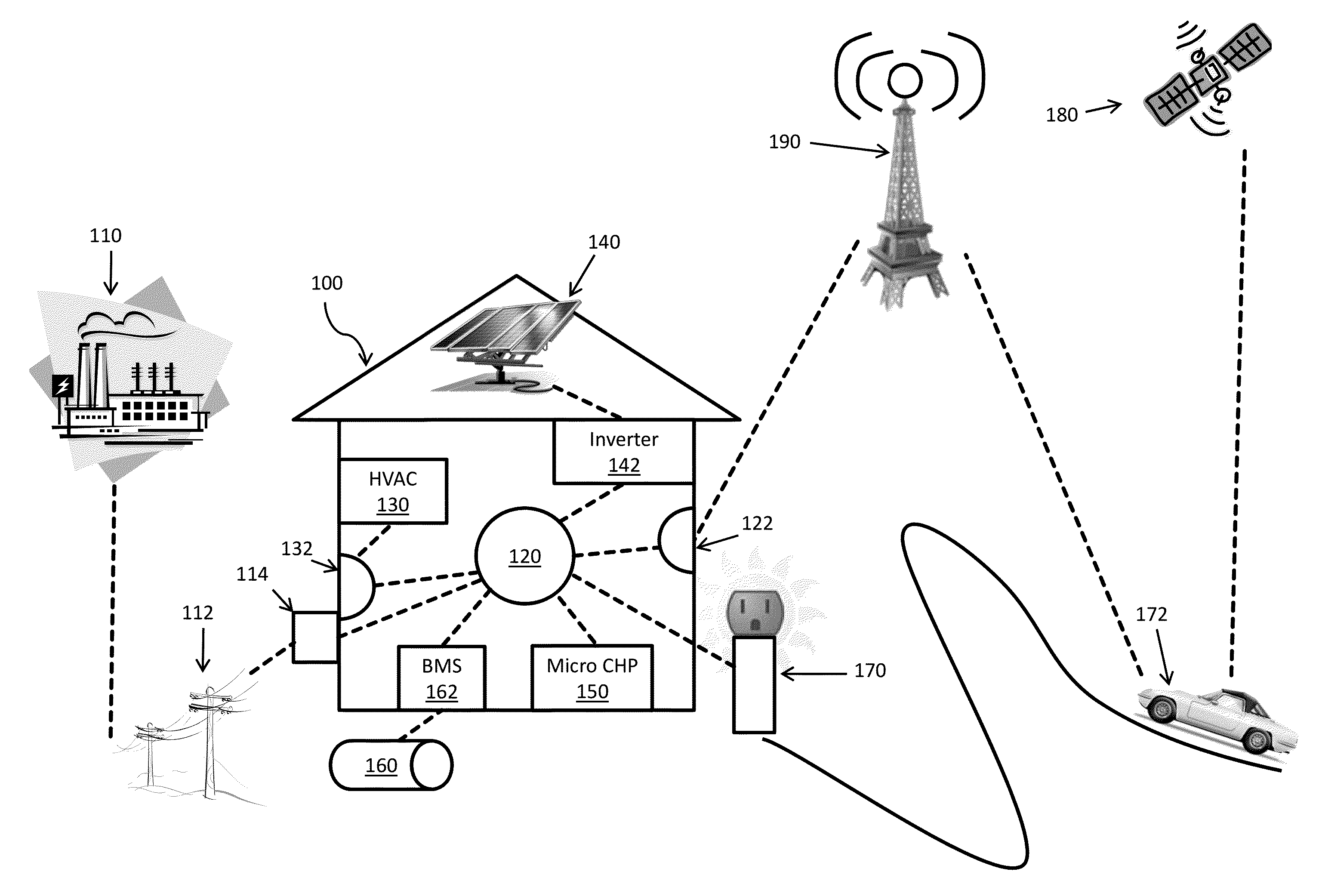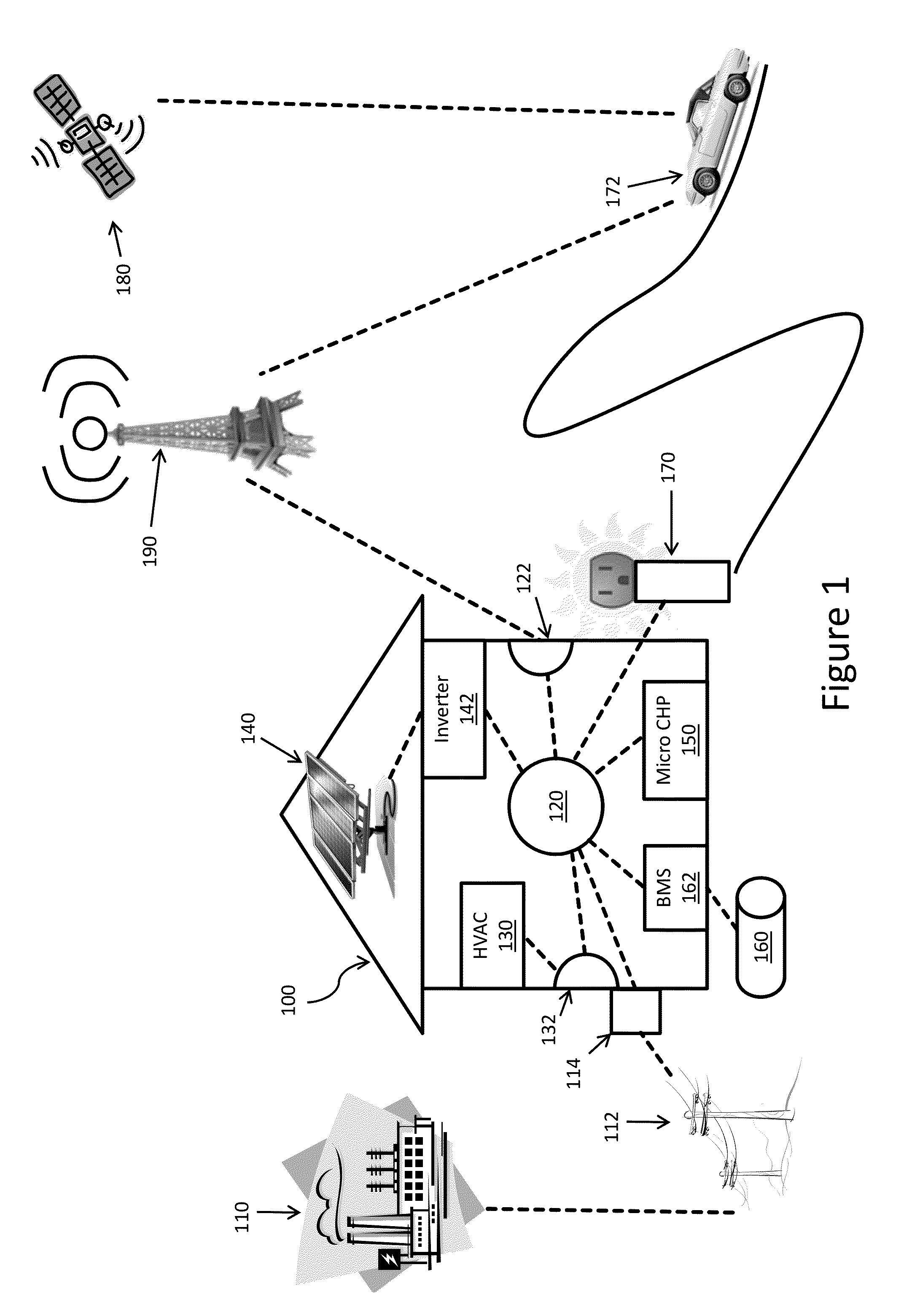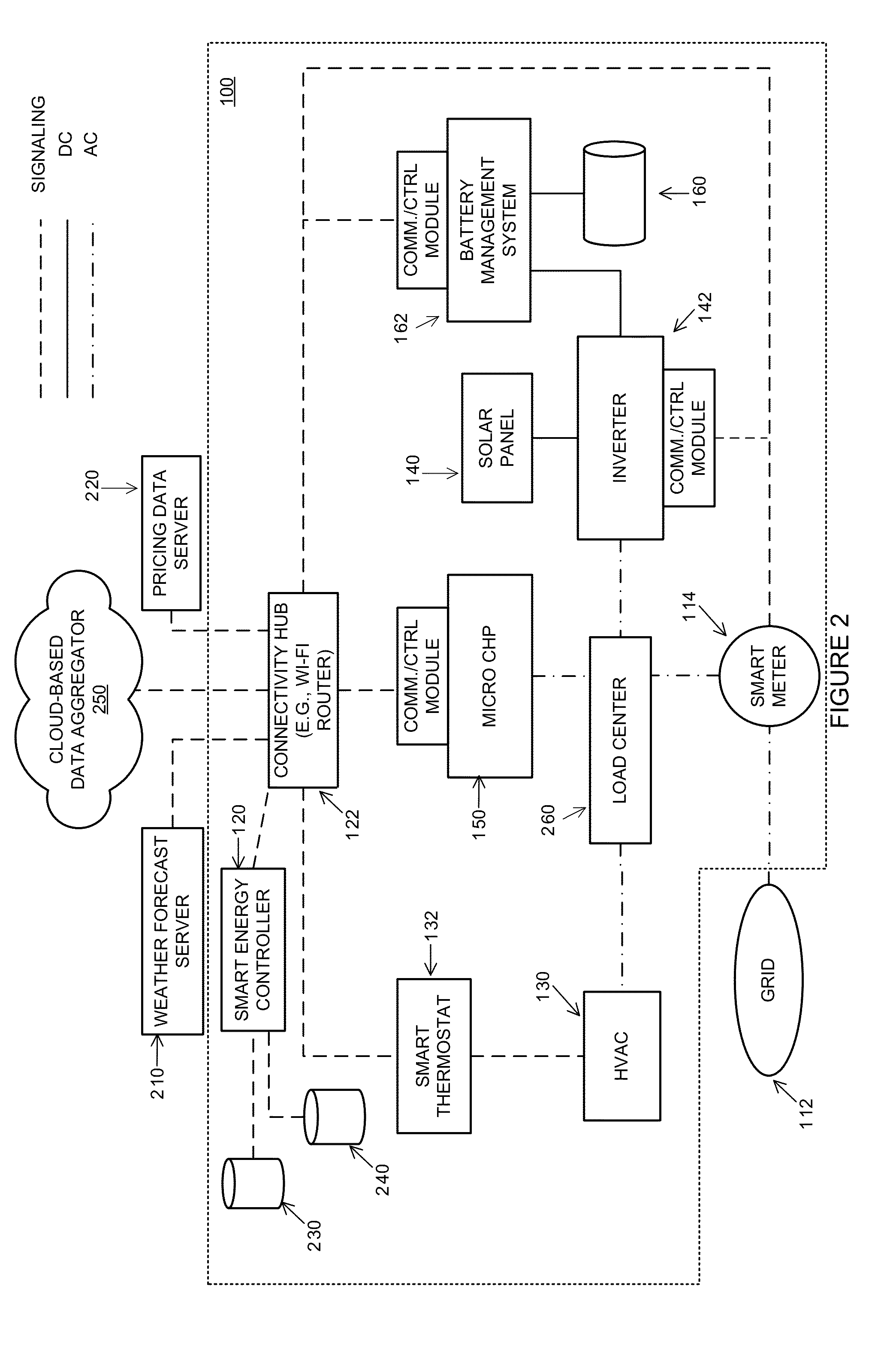Systems and methods for energy cost optimization
a technology of energy cost optimization and energy cost management, applied in the field of smart energy management, can solve the problems of time-consuming, if not overwhelming, manual modification of home energy usage by consumers, and achieve the effects of reducing overall cost, reducing costs, and consuming or storing the same amount of energy
- Summary
- Abstract
- Description
- Claims
- Application Information
AI Technical Summary
Benefits of technology
Problems solved by technology
Method used
Image
Examples
Embodiment Construction
[0027]FIG. 1 shows an architectural overview of an energy “ecosystem,” upon which the principles of the present disclosure may be applied. The figure includes various energy sources, energy reserves, and loads that are located within or closely associated with a “local” home energy system 100. The figure also includes various “external” elements such as loads that can be disconnected from the home energy system 100, communications elements, and data sources. Certain entities or elements discussed in the present application may not be included in the present figures for clarity.
[0028]As shown in FIG. 1, a user's home energy system 100 may be connected to a utility provider 110 (e.g., a power plant) via a power grid 112. The home energy system 100 may both receive and transmit electrical power to the grid 112, with the exchange monitored by a smart meter 114. The home may include a smart energy controller 120, which may act as a centralized controller for the various energy-related de...
PUM
 Login to View More
Login to View More Abstract
Description
Claims
Application Information
 Login to View More
Login to View More - R&D
- Intellectual Property
- Life Sciences
- Materials
- Tech Scout
- Unparalleled Data Quality
- Higher Quality Content
- 60% Fewer Hallucinations
Browse by: Latest US Patents, China's latest patents, Technical Efficacy Thesaurus, Application Domain, Technology Topic, Popular Technical Reports.
© 2025 PatSnap. All rights reserved.Legal|Privacy policy|Modern Slavery Act Transparency Statement|Sitemap|About US| Contact US: help@patsnap.com



